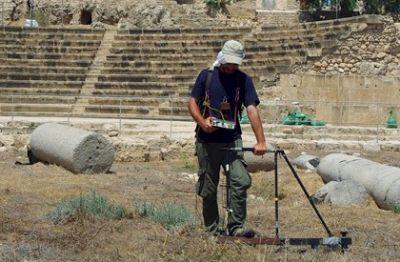http://www.moi.gov.cy/MOI/pio/pio.nsf/All/F993E7E0857D84CCC22579C1005E688F?OpenDocument
The Department of Antiquities, Ministry of Communications and Works announces the launch of the Pafos Agora Project by the Department of Classical Archaeology of the Institute of Archaeology of the Jagiellonian University (JU) in Kraków, Poland, directed by Prof. Papuci-Władyka. The Jagiellonian University conducted archaeological excavations at Nea Pafos between July 3 and August 7 2011.

The project's objective is to research the ancient agora of Nea Pafos, the capital city of Cyprus in the Hellenistic and Roman periods. Earlier research conducted between 1975-78 by K. Nikolaou for the Department of Antiquities, located and partly researched the Roman agora of Nea Pafos in front of the Odeon. Since the Romans would very often use former topographic elements in their urban settings, it is very probable that this would be the case in Pafos. In addition, the epigraphic sources and archaeological finds also suggest that the main town square of the Roman city was built over the Hellenistic one.

A preliminary geophysical research was carried out and was followed by traditional excavations. Two trenches were opened, one in the central part of the Roman Agora and one in the central part of the east portico. Architectural remains (walls, floors, a drainpipe system and two cisterns) were uncovered, most probably belonging to three chronological phases: Hellenistic, Early Roman and Late Roman.
The movable material uncovered during the excavations consists primarily of pottery dating to the Roman period, but there are fragments dating to the Byzantine and Hellenistic periods as well. Some of the most important finds include bronze objects (such as a jug with decorated handle attachments, scales and an acorn-shaped weight, pins and nails, coins), iron and lead objects (nails, weights), including an iron Roman sword (preserved in several matching fragments) and a lead vessel of cylindrical shape with long iron handle. A very well preserved Egyptialyzing amulet with engravings on one side and a magic inscription in Greek alphabet on the other side is another find of particular interest. Also terracotta lamps and a helmeted figurine head of Athena are noteworthy, as well as many fragmented glass vessels.
|